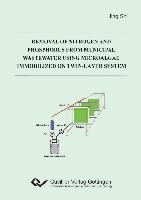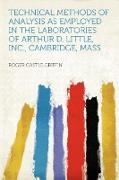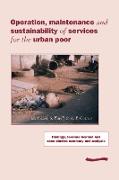Removal of Nitrogen and Phosphorus from Municipal Wastewater using Microalgae immobilized on Twin-Layer System
BücherAngebote / Angebote:
Excessive nitrogen and phosphorus loading from municipal wastewater treatment plants is an ongoing threat to water quality, which leads to more stringent environmental regulations in different countries. Microalgal mediated twin-layer system offers an interesting alternative for nitrogen and phosphorus removal since it provides a treatment to remove both nutrients efficiently coupled with the production of potentially valuable biomass. In the twin-layer system, microalgae are immobilized by self-adhesion on a wet, microporous, ultrathin substrate (the substrate layer). Subtending the substrate layer, a second layer, consisting of a macroporous fibrous material (the source layer), provides the growth medium. Twin-layer effectively separate microalgae from the bulk of their growth medium, yet allow diffusion of nutrients. Nylon filter cloth and glass grid reinforced lamina were selected as the suitable substrate and source layer for twin-layer system, respectively. Immobilized green algae Scenedesmus rubescens and Chlamydomonas terricola showed highest biomass productivities among 23 algae supplied by synthetic secondary wastewater and were recommended for wastewater treatment in general. Removal of nitrogen and phosphorus from the real municipal wastewater by S. rubescens was investigated. During 54 days, S. rubescens grew well (1.05 g dry weight m-2 day-1), remained immobilized and removed phosphorus, nitrate and ammonium efficiently from four types of wastewater within short retention time (1-2 days), e.g. the residual phosphate-P was < 0.22 mg l-1 and nitrate-N was < 2 mg l-1 within one day in the secondary settled wastewater. Three scenarios were proposed on integrating twin-layer system into wastewater treatment plants. In one of the three, removing phosphorus and ammonium from 100 m3 primary settled wastewater to meet the discharge requirement i.e. = 1 mg l-1 P will need a minimal ground area of greenhouse of about 1369 m2 and 16.6 kWh electricity daily. It is concluded that immobilization of S. rubescens on twin-layers is an effective means to reduce nitrogen and phosphorus levels in the wastewater. More efforts should be focus on the selection of microalgae and co-immobilization of microalgae with microalgae/other microorganisms to reduce organic substances.
Folgt in ca. 2-3 Arbeitstagen




